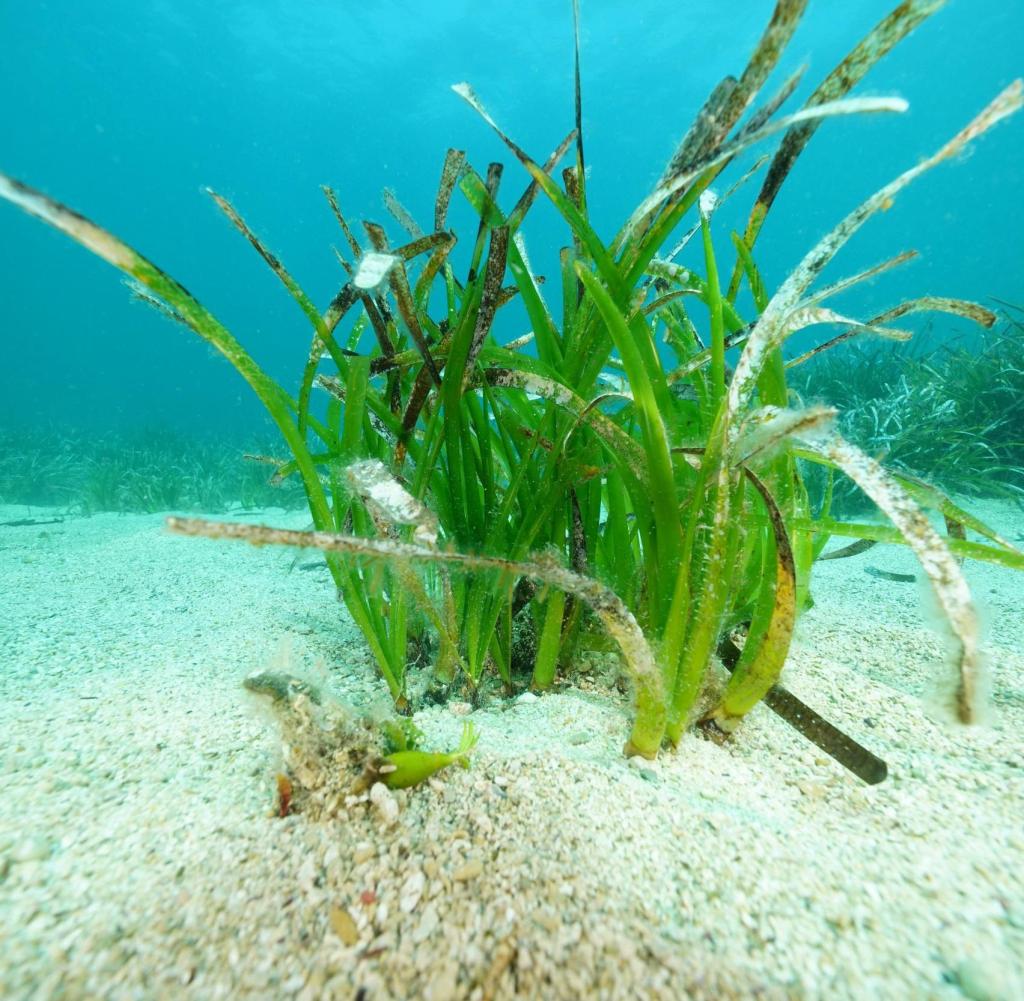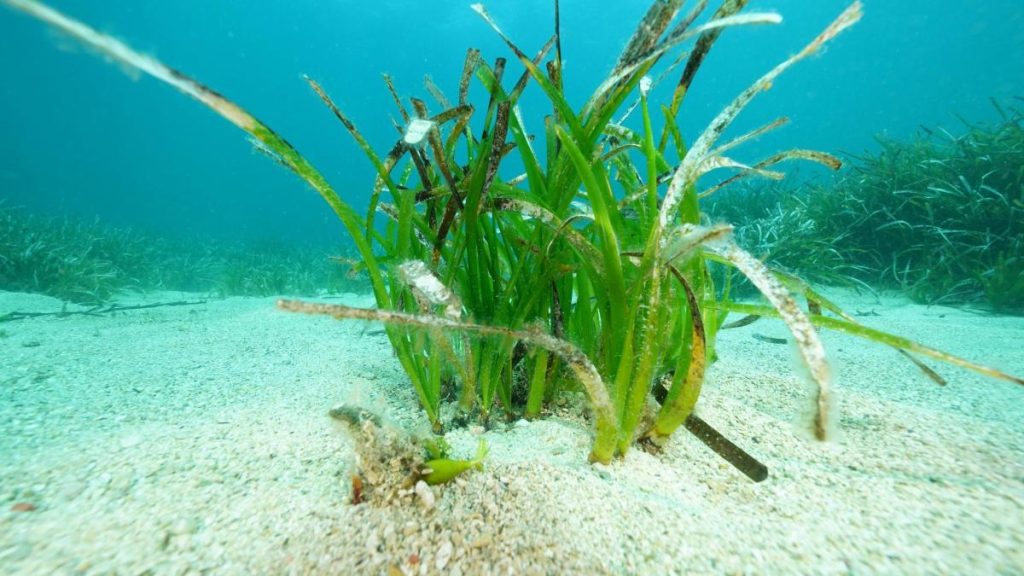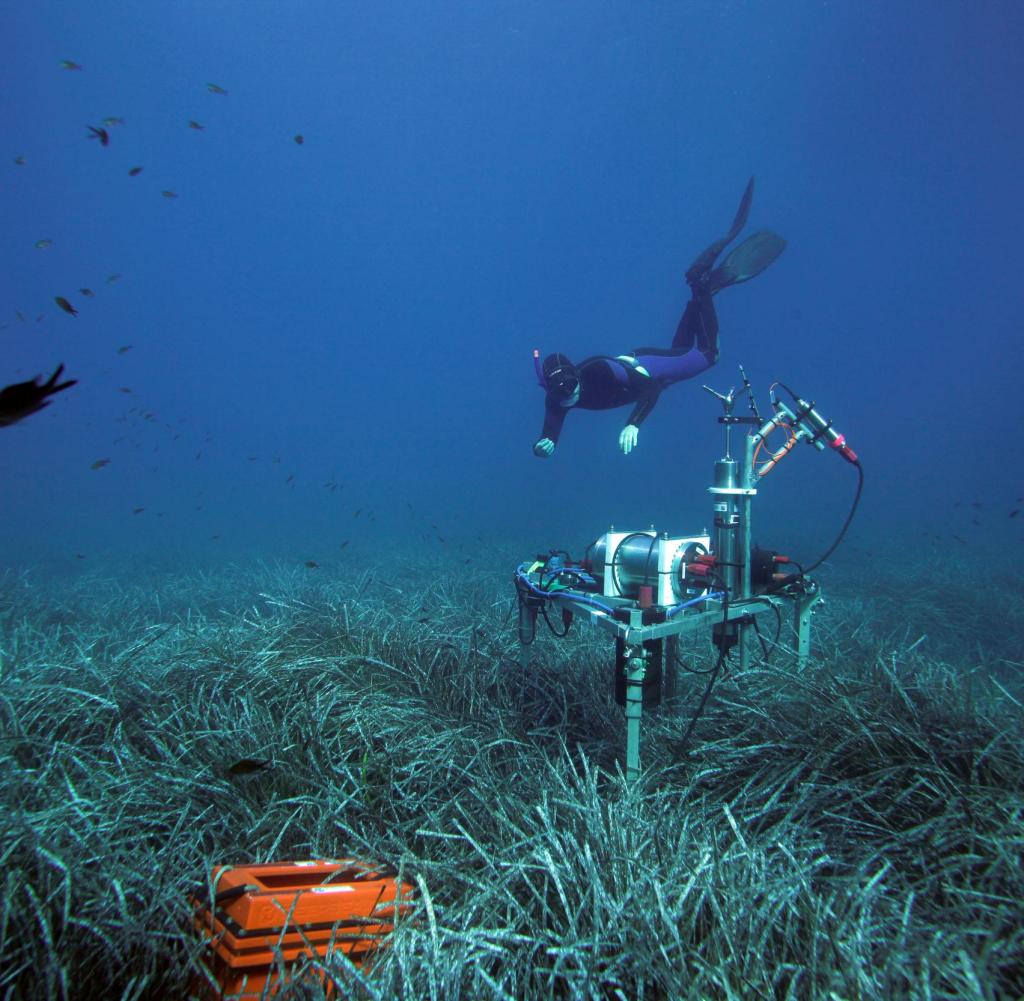Amazing amounts of sugar in seaweed


80 times the sugar concentration in seaweed is higher than ever before
Source: HYDRA Marine Sciences GmbH
In the seas, seaweed grows in large meadows. They are important parts of an ecosystem. Researchers from Bremen found extremely high concentrations of sugar there, as well as in soil – and off the German coast.
seegrass meadows are “sweet spots” in the midst of brackish coastal waters. They store large amounts of carbon in the form of sugars in the sediments around their roots. This is what the researchers said Supervised by the Max Planck Institute (MPI) for Marine Microbiology in Bremen in the journal “Nature Ecology & Evolution”. Grass meadows under Neptune, found in the Mediterranean, found sugar concentrations 80 times higher than any sea level ever measured. Additional studies should clarify how seagrass meadows and other marine plants should be included in global carbon cycle models.
Seaweeds are known to store atmospheric carbon very efficiently in their tissues and store it as organic matter in sediments. Scientists led by Manuel Liebeck wrote in their specialized article that, when calculated over an area of the same size, it sinks carbon 35 times faster than trees in rainforests.
Seagrass meadows are also essential components of the marine ecosystem: they are home to many species of fish and other animals, and they stabilize the sea floor and remove pollutants from the water.
The team has now examined the chemical composition of the water in and around the seaweed layers of the species Posidonia oceanica, the grass of Neptune. Under the meadows, in the so-called root ground, scientists have found surprisingly high concentrations of sugar, especially sucrose. At a distance, the focus decreased significantly.
Investigations in the seagrass meadow
Source: HYDRA Marine Sciences GmbH
Assuming that 300,000 to 600,000 square kilometers of coastal seabeds are covered with seaweed, they calculated a global amount of more than 1 million tons of sucrose in the top 30 cm of sediment. The concentration of sucrose measured under Neptune Grass is 2,000 times higher than that in the open ocean. Scientists have also found high concentrations of sugar under seagrass meadows in the Baltic Sea and the Caribbean.
But how does sugar enter the sediment? Scientists have determined that carbon that is absorbed from the atmosphere is converted into sugar and released into the environment via roots. For plants, excretion of sugar is a way to get rid of excess amounts of sugar during times of high production or low growth.
More sugar is produced in the middle of the day
Seaweed produces polysaccharides during photosynthesis. Under medium-light conditions, plants use most of this sugar for metabolism and growth,” explained Nicole Dobellier, Director of the MPI Institute of Marine Microbiology. “But when there is very strong light, for example at noon or in summer, they They produce more sugar than they can use or store. Then they release excess sucrose into their roots. It’s kind of like an overflow valve.”
What particularly surprised the scientists was that the sugar was not broken down again immediately, although it is a common source of energy for bacteria in the sediments, among other things. They found that the oxygen concentration decreased rapidly with increasing sediment depth. In order to break down sugar, bacteria then rely on metabolic processes that do not require oxygen.
This is possible in principle, but not if bacterial decomposition is prevented by substances from the phenol group. And it was precisely these substances that the researchers found in large quantities in the sediments. It is assumed that they are released during the decomposition of dead matter. Scientists have calculated that without phenols, the sugar would be completely converted by bacteria to carbon dioxide in less than a day.
Some types of bacteria are able to break down sugar despite the lack of oxygen and despite the phenols. Perhaps these sucrose specialists are beneficial to plants, for example, because they provide vital nitrogen – a limited resource in many places. “We are familiar with these beneficial relationships between plants and microorganisms in the rhizosphere of wild plants,” explains first author Maggie Sugin. “But we are only just beginning to understand the intimate and complex interactions of seaweeds with microorganisms in the marine root zone.”
Researchers point to the importance of seagrass meadows to the global carbon budget. “Our study shows that significant amounts of sucrose produced by P. Oceanica do not fully enter the microbial cycle, which likely has important implications for carbon sequestration in these coastal ecosystems.”
However, seagrass beds are threatened in many seas: “Large amounts of stored carbon will be released if seagrass beds continue to decline,” Liebeck said. “Our calculations show that if the sucrose in the roots of seaweed were broken down by microbes, up to 1,540,000 tons of carbon dioxide would be released into the atmosphere worldwide.” This relates to the amount of carbon dioxide that 330,000 cars emit in a year. the year.”

“Total coffee aficionado. Travel buff. Music ninja. Bacon nerd. Beeraholic.”












More Stories
Coral Seeding: Artificial Insemination Makes Coral More Heat Tolerant
Fear, Anger, and Denial: How People Respond to Climate Change – Research
LKH Graz: Using radiation to combat heart arrhythmias